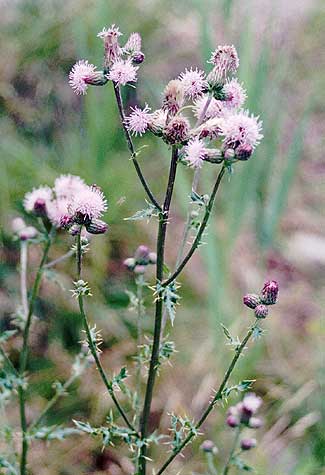 Canada Thistle
Canada Thistle
Cirsium arvense
From the Global Invasive Species Database
C. arvense is a herbaceous perennial of the aster family with erect stems 0.5 - 1.0 m tall, prickly leaves, and an extensive creeping rootstock. Stems are branched, often slightly hairy, and ridged. Leaves are lance-shaped, irregularly lobed with spiny, toothed margins and are borne singly and alternately along the stem. Rose-purple, lavender, or sometimes white flower heads appear from June through October, generally, and occur in rounded, umbrella-shaped clusters. The small, dry, single-seeded fruits, called achenes, are 0.3 - 0.5 m long and have a feathery structure attached to the seed base.
American Indians purportedly used an infusion of C. arvense roots for mouth diseases. The Chippewa considered it to be a "tonic, diuretic, and astringent". Young shoots and roots "can be used in the same ways as asparagus," and were eaten in Russia and by Native Americans. The nectar of its flowers is also said to make good honey.